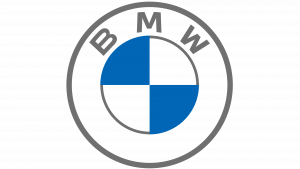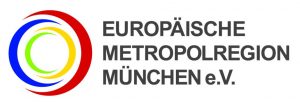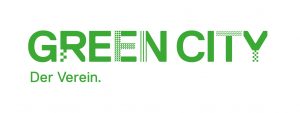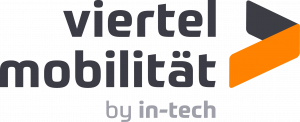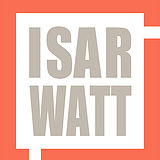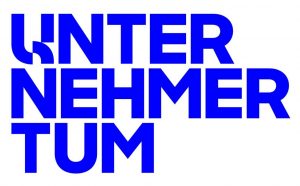together
we can make
possible
Innovations for the
mobility transition
The Munich cluster for the future of mobility in metropolitan regions (MCube) - of the Technical University Munich - uses the unique agglomeration of actors in the fields of mobility innovation to turn Munich into a pioneer for sustainable and transformative mobility innovations. The goal of the cluster is: to test and research leap innovations in the mobility sector and develop scalable solutions with model character for Germany and worldwide - from autonomous driving and electromobility to new legal foundations for mobility investments; from connected, AI-driven mobility control to the redesign of our cities and public spaces. to the redesign of our cities and public spaces.
What do we do?
We establish the vision of making Munich a pioneer for sustainable and transformative mobility innovations. The relationship between urban and rural areas is a particular focus.
VISION
We clearly align mobility innovations with societal challenges. The MCube Cluster intends to contribute to three missions in the Munich metropolitan region: improving the quality of time, space and air.
MISSION
MCube - a unique network of more than 50 actors from the Munich region in the fields of science, business, the public sector and society - is developing sustainable solutions for mobility in metropolitan regions.
NETWORK
Three fields of innovation
Three fields of innovation are developed through concrete projects and solutions for the future of mobility.
Electrify and automate transport systems
Electrification:
- Holistic charging infrastructure solutions
- Electrification of entire neighborhoods in Munich
- Electric cargo bikes
- Emission-free urban traffic with acoustic improvement
- Electrification of delivery traffic
- Establishing trust and acceptance of electrified mobility in society
- Reduce charging times/use charging time optimally
Automation:
- Autonomous shuttles for more time-efficient personal transportation
- Automated last mile
- Automated parking
- Automating delivery traffic and logistics
- Mastering complex city center situations autonomously
- What are the holistic influences of automation on space/air/time?
- Infrastructure for automation of traffic (control center)
- Safety through autonomous driving
Developing and integrating mobility options
Multimodality:
- Radical transformation through demand-centered combination of different modes of transportation
- Innovations and experiments in pedestrian and bicycle traffic
- Mobility culture: understanding lifestyles, values and everyday practices, jointly developing and testing transformation scenarios
- Technical enablers: sharing, digital platforms, Mobility as a Service (MaaS)
Digitization as a megatrend:
- Big Data and simulations in researching traffic flows
- Development of digital products and services (incl. sharing and platforms)
- Reducing the susceptibility of existing systems to failure without building new infrastructure
- Networking of data systems
- Interoperability of previously separate data systems and platforms
- Overcoming often fragmented data infrastructures and information and billing platforms of (e.g., municipal) mobility providers
- Pilot projects in start-ups (e.g. Flixbus, Fernride, EVUM, Twaice, Artisense, Lilium)
- Regulatory, economic and societal frameworks for new and integrated mobility options
Network locations and design mobility spaces
Development of locations (quarters / clusters):
- Mobility concepts (also for the networking of locations among each other)
- Mobility offers and stations
- Regulation (e.g. parking space statutes)
Further development of evaluation methods:
- Spatial effects
- Accessibility improvements
- Comparison and shift between transport modes
Better use of public space:
- "Transition Experiments"
- toolkit for car-reduced areas (..., curbside management, etc.)
ELECTRIFY AND AUTOMATE
Electrification:
Holistic charging infrastructure solutions
Electrification of entire neighborhoods in Munich
Electric cargo bikes
Emission-free urban traffic with acoustic improvement
Electrification of delivery traffic
Creating trust/acceptance for electric mobility within society
schaffen
Reduce charging times/use charging time optimally
Automation:
Autonomous shuttles for more time-efficient personal transportation
Automated last mile
Automated parking
Automating delivery traffic and logistics
Mastering complex city center situations autonomously
What are the holistic influences of automation on space/air/time?
Infrastructure for automation of traffic (control center)
Safety through autonomous driving
DEVELOP MOBILITY OPTIONS
Multimodality:
Radical transformation through demand-centered combination of different modes of transportation
Innovations and experiments in pedestrian and bicycle traffic
Mobility culture: understanding lifestyles, values and everyday practices, jointly developing and testing transformation scenarios
Technical enablers: sharing, digital platforms, Mobility as a Service (MaaS)
Digitization as a megatrend:
Big Data and simulations in researching traffic flows
Development of digital products and services (incl. sharing and platforms)
Reducing the susceptibility of existing systems to failure without building new infrastructure
Networking of data systems
Interoperability of previously separate data systems and platforms
Overcoming often fragmented data infrastructures and information and billing platforms of (e.g., municipal) mobility providers
Pilot projects in start-ups (e.g. Flixbus, Fernride, EVUM, Twaice, Artisense, Lilium)
Regulatory, economic and societal frameworks for new and integrated mobility options
NETWORKING AND MOBILITY SPACES
Development of locations (quarters / clusters):
Mobility concepts (also for the networking of locations among each other)
Mobility offers and stations
Regulation (e.g. parking space statutes)
Further development of evaluation methods:
Spatial effects
Accessibility improvements
Comparison and shift between transport modes
Better use of public space:
"Transition Experiments"
toolkit for car-reduced areas (..., curbside management, etc.)
Our partners

